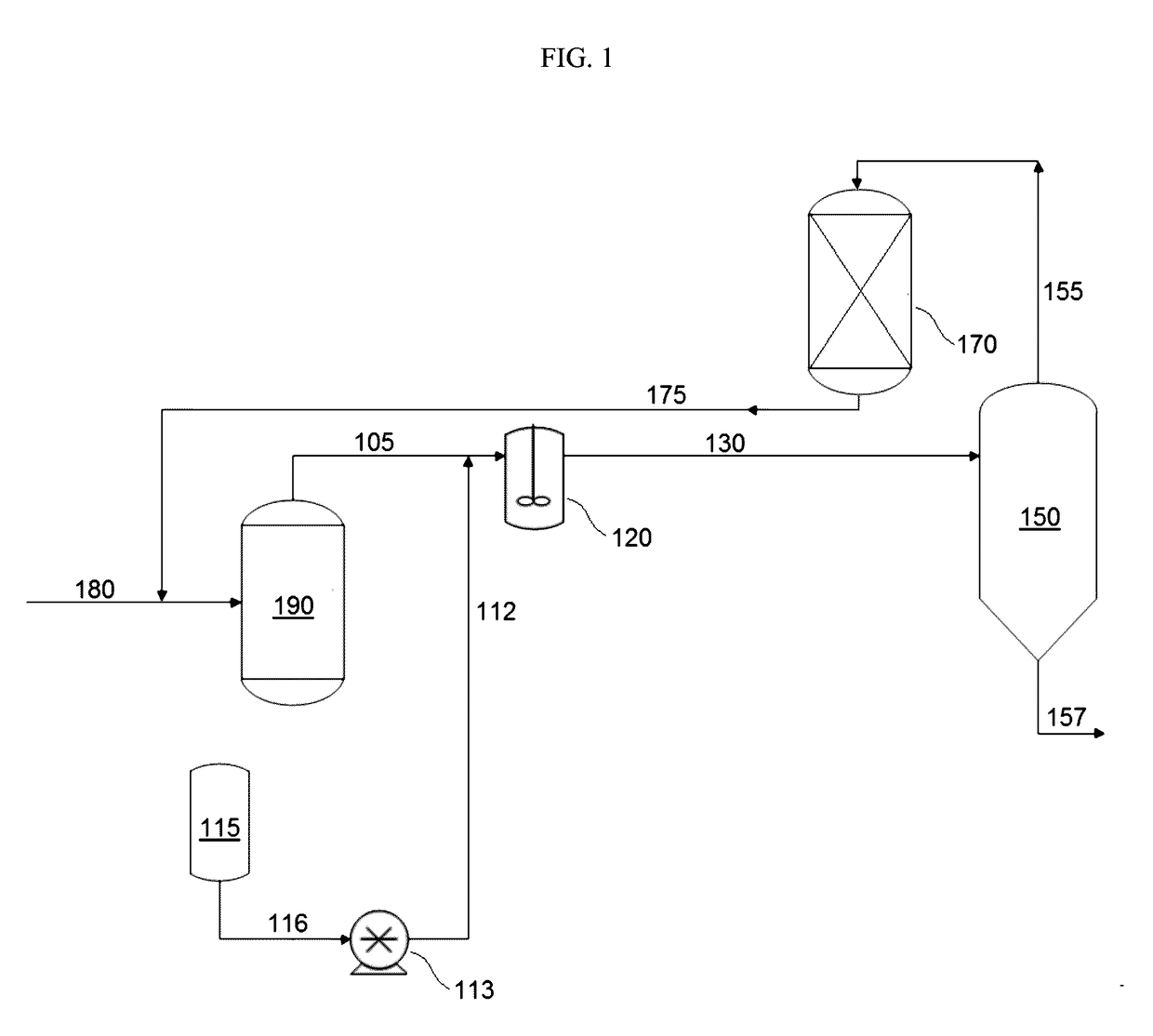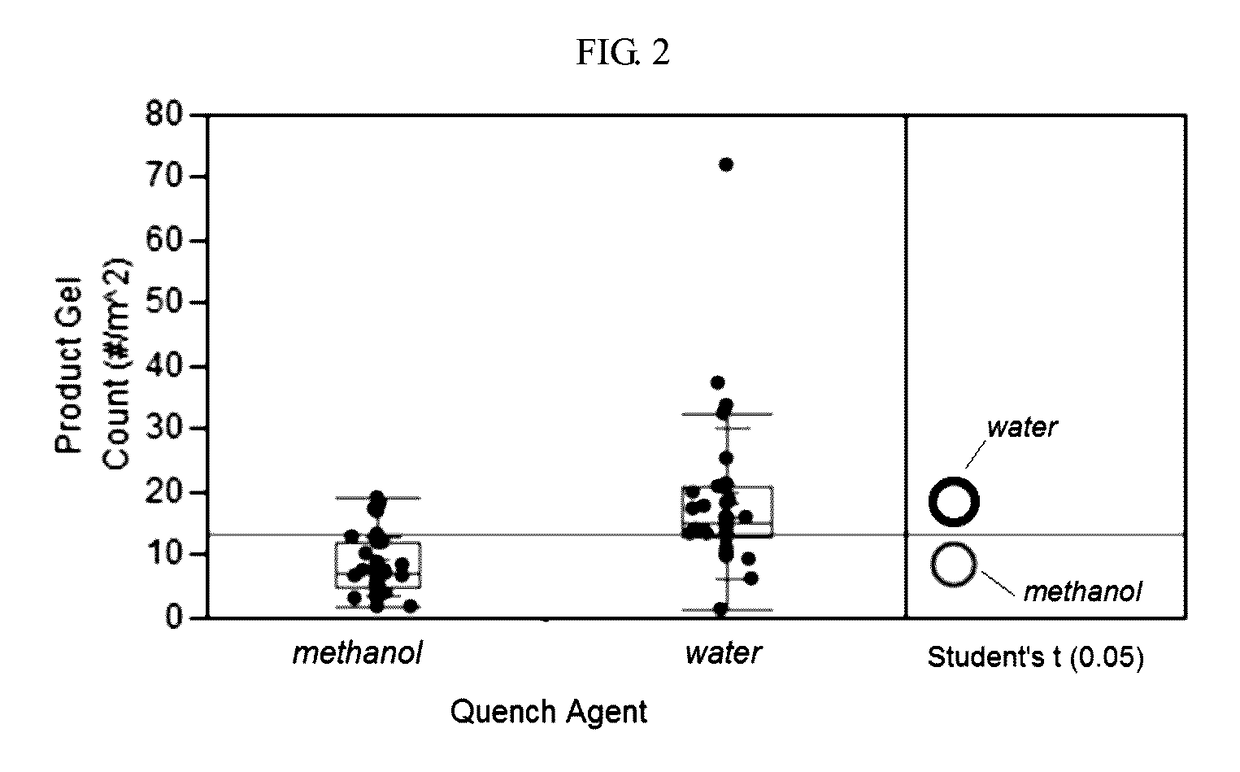Mitigation of Catalyst Inhibition in Olefin Polymerization
a technology of olefin and catalyst, which is applied in the field of quenching agents, can solve problems such as creating other problems, and achieve the effects of reducing the number of catalysts
- Summary
- Abstract
- Description
- Claims
- Application Information
AI Technical Summary
Benefits of technology
Problems solved by technology
Method used
Image
Examples
examples
[0031]Two different polymerization reactions were run. In both cases, ethylene, propylene, and ENB were fed to a solution polymerization reactor in isohexane solvent. Metallocene catalyst was provided to the reactor, and polymerization carried out under identical conditions (temperature, pressure) in the solution reactor. According to Run A, water was injected into the polymerization effluent drawn from the polymerization reactor; while in Run B, the water flow to the polymerization effluent was shut off, and instead methanol was injected into the polymerization effluent.
[0032]In both cases, the quenched polymer stream was separated into polymer-rich and polymer-lean phases by LCST separation. The polymer-rich phase was recovered and further devolatilized using a kneader so that a solid polymer product was recovered.
[0033]Gel count analysis was conducted on each solid polymer product (i.e., Run A product and Run B product). Run A and Run B products were extruded into a cast film, in...
PUM
| Property | Measurement | Unit |
|---|---|---|
| Sheet carrier density | aaaaa | aaaaa |
| Sheet carrier density | aaaaa | aaaaa |
Abstract
Description
Claims
Application Information
 Login to View More
Login to View More - R&D
- Intellectual Property
- Life Sciences
- Materials
- Tech Scout
- Unparalleled Data Quality
- Higher Quality Content
- 60% Fewer Hallucinations
Browse by: Latest US Patents, China's latest patents, Technical Efficacy Thesaurus, Application Domain, Technology Topic, Popular Technical Reports.
© 2025 PatSnap. All rights reserved.Legal|Privacy policy|Modern Slavery Act Transparency Statement|Sitemap|About US| Contact US: help@patsnap.com


